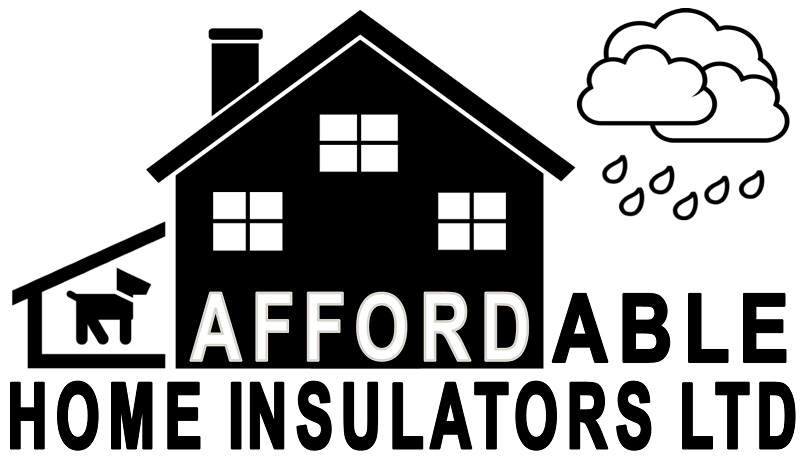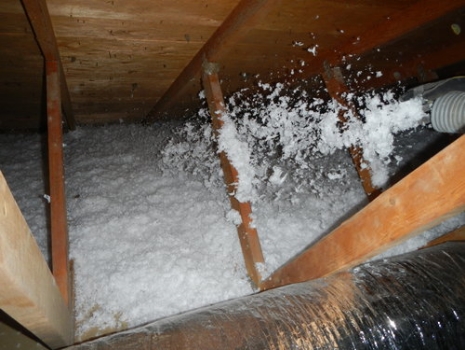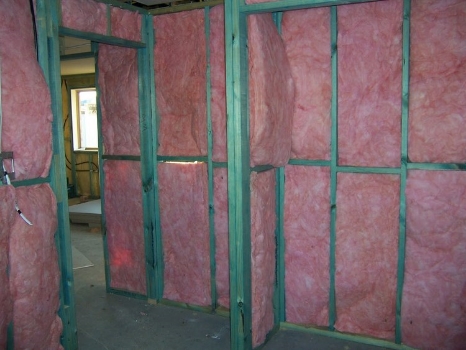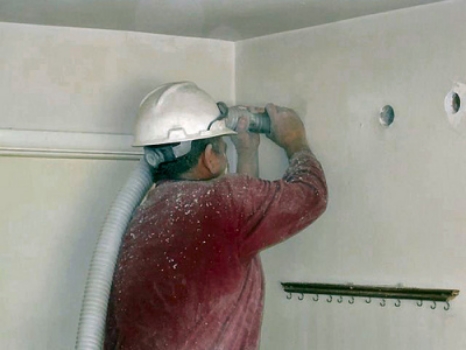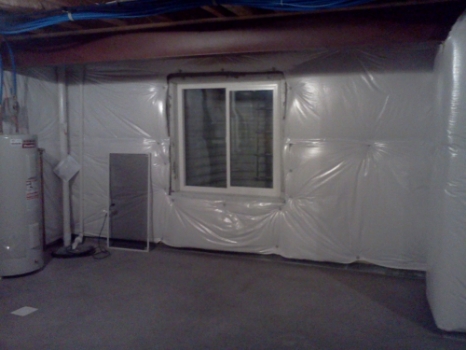ANSWERING YOUR INSULATION QUESTIONS
QUOTE HOTLINE: 403-907-0346
CAN I INSTALL FIBERGLASS OVER CELLULOSE?
You bet you can. We do it everyday. All products in your attic have an R-value, and we install fiberglass insulation to the right level on top of existing insulation to achieve the desired R-value, which is usually R50 or R60. Many homes built in the 1970's, 80's and 90's have the older style cellulose or cardboard based insulation. We highly recommend you install fiberglass over top of that insulation. it's cheaper, not as messy, and in our professional opinion, performs much better.
WHAT IS THE DIFFERENCE BETWEEN FIBERGLASS & CELLULOSE INSULATION
Cellulose insulation is manufactured almost entirely from recycled newspaper. This fact alone makes it popular as an environmentally green product. Because it is made with newspaper as its main input material, there are various chemical processes and additives that give it a fire resistant nature. While there is much speculation out there about its fire resistant ability, most seem anecdotal, as it has passed all government standards set by the CMHC and other various agencies. While we do not recommend the new addition of cellulose to your attic, I certainly would not worry too much about any existing insulation you now have.
Fibreglass insulation, in manufactured with a high recycled content as well (they are the world's largest user of recycled glass bottles), and is naturally fire resistant. This fact, along with price matching, has allowed fibreglass to become the dominant product used in Calgary and area attics. It has become the choice of new home builders, and most retro-fit companies like us, use it as well. (Back to Top)
WHAT DOES R-VALUE MEAN?
R-Value is simply an index that is used to predictably define and measure a given product's resistance to heat transfer or heat loss. Everything has an R-Value, even things you would not think of as being insulators, they just have a very low R-Value.
Those wood chips in some attics, for example, have some value. This is why we don’t recommend removing them before you add more insulation, unless you have a good reason to do so (it’s expensive).
The bottom line is, the higher the R-Value, the better a given system will resist heat transfer or heat loss. The metric equivalent of R-Value is RSI. The same principles apply, its just a different scale. (Back to Top)
HOW MUCH INSULATION DO I NEED IN MY ATTIC?
There is no exact answer to this question. When I started in this business, people used to ask me why I don’t try to sell customers R-60 or R-70, knowing that in 50 years this will likely be the standard. The answer, is that most people don’t need that much insulation and most attics cannot effectively be insulated with that much.
The building code minimum is R-34 and is likely to be changed to R-40 in the near future. I sometimes work on a committee that is helping to write the new building code. Because of Kyoto, it's speculated that they may raise it up to an R-50. R-40 or r-50 is what I would recommend. This is where you will get your quickest return on your investment. Anything more, has a declining cost benefit curve. For example, if you put R-70 in your home, you will probably recover the cost of the first R-40 upgrade in the first or second winter season. It make take you 10 to 15 years to recover your investment in the last R-30 portion of that R-70. Once you reach the R-40 to R-50 level, your warm air starts to find other ways out of your home. See our draft proofing section about this effect.
Like anything else, there are exceptions to this rule, and there are some homes or buildings that may require more. I usually suggest a minimum of R50 to rural residents who are subjects to more adverse weather conditions.
WHAT IS THE DEAL WITH VERMICULITE & ASBESTOS
Essentially we have to direct all inquiries about the warnings to the government agency that began issuing them. Read all of the information from the Health Canada Website.
From the way we read the information provided, and as per discussions with ACSA (Alberta Construction Safety Association), there is no issue installing new insulation over top of the existing vermiculite (as any asbestos that was possibly there, would have settled right down to the back of the drywall).
As for removing Vermiculite, we are not able to do that, unless a customer has had it tested and certified to be within acceptable parameters for regular removal. For testing, contact: PHH Environmental (403) 250-5722. If you get your insulation tested, please contact them first, as there is a very specific procedure for collecting the sample, in order to get a good test. We believe the test costs approximately $60. If your insulation has been tested, and does not contain asbestos, then regular removal is possible using our equipment. If you have a positive test, we suggest that you contact an Asbestos abatement company.
There are some insulation companies out there that are still willing to remove it, using the traditional equipment, but we strongly recommend against that approach. It will be attractive because it will cost a lot less than asbestos abatement, but it's contrary to provincial regulations, it may expose your family to dangerous asbestos dust, and it will expose the workers to dangerous asbestos dust as well. (Back to Top)
CAN I BLOW NEW INSULATION OVER THE OLD INSULATION OR WOOD SHAVINGS?
Yes, you most certainly can. Many companies will tell you that you can't, so they can sell you expensive removal services, but we do it all the time. Wood shavings are still considered safe, although they don't have much r-value, so if you are short of space, you may want to remove them. Also, if you are having your electrician do substantial wiring up there during a renovation, then it may also be advisable. Some people just aren't comfortable with them up there, and want them removed. It's your decision. We offer a full line of removal services, so we would be happy to quote you, but we definitely don't try to intimidate customers by telling them that they HAVE to be removed.
HOW DOES HEAT LOSS IN MY HOME WORK?
There are three components of heat loss. They are conduction, convection, and radiation.
Conduction is the movement of heat through a substance by traveling from molecule to molecule. Since gasses have fewer molecules than solids or liquids, and these molecules are farther apart, the heat traveling through a gas is more restrained. Lighter gasses will be better at stopping conduction than heavier gases. Many insulation products achieve their R-Value because of the tiny spaces of air that are trapped within the material.
Convection is the movement of heat with a medium. Gasses are the best products to stop heat loss by conduction, but gasses move easily. If the heat is stuck in the gas, but the gas moves, the heat moves too. Lighter gasses move easier than heavier gases. Testing by labs such as Oak Ridge National Labs, and the National Association of Homebuilders Research Center, among others has shown that convective heat loss (Air Infiltration) will account for about 40% of the total heat loss in a home.
Radiation is the movement of heat as energy. Hard to explain, but easy to describe. Stand near a campfire, the side of you toward the flame is hot, the side away is cool. Heat is radiating to you. The best kinds of products to repel radiation heat losses are reflective insulation. The silvery foil insulation that you may have seen. (Back to Top)
DOES FIBERGLASS REALLY LOSE R-VALUE WHEN IT'S COLD?
The quickest answer is Yes. Both cellulose and fiberglass insulation loses some R-Value when negative temperatures get extreme.
There are the three types of heat loss: Convection, Radiation, and Conduction. They all play a role in your homes heat loss, but your attic insulation does its best job with convective and conductive heat loss. As it gets colder, your convective heat loss will increase at a faster rate as the warm air in your home gets into your attic. This is why it's so important to also seal any air penetrations into your attic. In modern homes this is done very well with a properly installed vapor barrier. In older homes, this can be an issue that should be addressed.
Effectively both products do not have a straight R-Value to temperature line, and their effectiveness have a declining curve. Because cellulose is denser, it is less subject to this R-Value loss, than fiberglass of the same depth. That is why the manufacturers recommendation for fiberglass requires a deeper installation depth to achieve the same R-Value as with cellulose. Make sure your fiberglass contractor is blowing the insulation to the right depth, in accordance with the products manufacturer.
